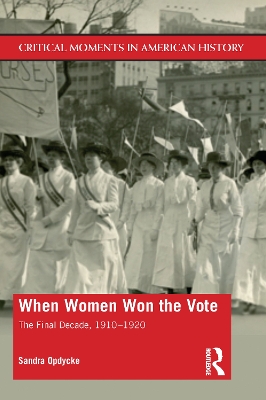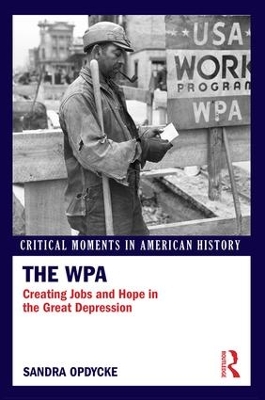Critical Moments in American History
2 total works
When Women Won the Vote focuses on the final decade (1910-1920) of American women's fight for the vote-a fight that had already been underway for more than sixty years, and which culminated in the passage of the 19th amendment in 1920.
Sandra Opdycke reveals how woman suffragists campaigned in communities across the country, building a mass movement and tirelessly publicizing their cause. Meanwhile, in Washington DC, the main suffrage organization led by Carrie Chapman Catt courted the President and Congress with diplomatic skill, while the smaller National Woman's Party, headed by Alice Paul, intensified political pressure with confrontational picketing and demonstrations. Supported by primary documents and online eResources, this book adds context by describing the historical events that shaped this crucial decade in American women's fight for the vote.
The story of how American women won the vote is a compelling chapter in US women's history and in the story of American democracy. This book is essential reading for students of American Political or Women's History, Gender Studies, or Progressivism.
Established in 1935 in the midst of the Great Depression, the Works Progress Administration (WPA) was one of the most ambitious federal jobs programs ever created in the U.S. At its peak, the program provided work for almost 3.5 million Americans, employing more than 8 million people across its eight-year history in projects ranging from constructing public buildings and roads to collecting oral histories and painting murals. The story of the WPA provides a perfect entry point into the history of the Great Depression, the New Deal, and the early years of World War II, while its example remains relevant today as the debate over government's role in the economy continues.
In this concise narrative, supplemented by primary documents and an engaging companion website, Sandra Opdycke explains the national crisis from which the WPA emerged, traces the program's history, and explores what it tells us about American society in the 1930s and 1940s. Covering central themes including the politics, race, class, gender, and the coming of World War II, The WPA: Creating Jobs During the Great Depression introduces readers to a key period of crisis and change in U.S. history.

